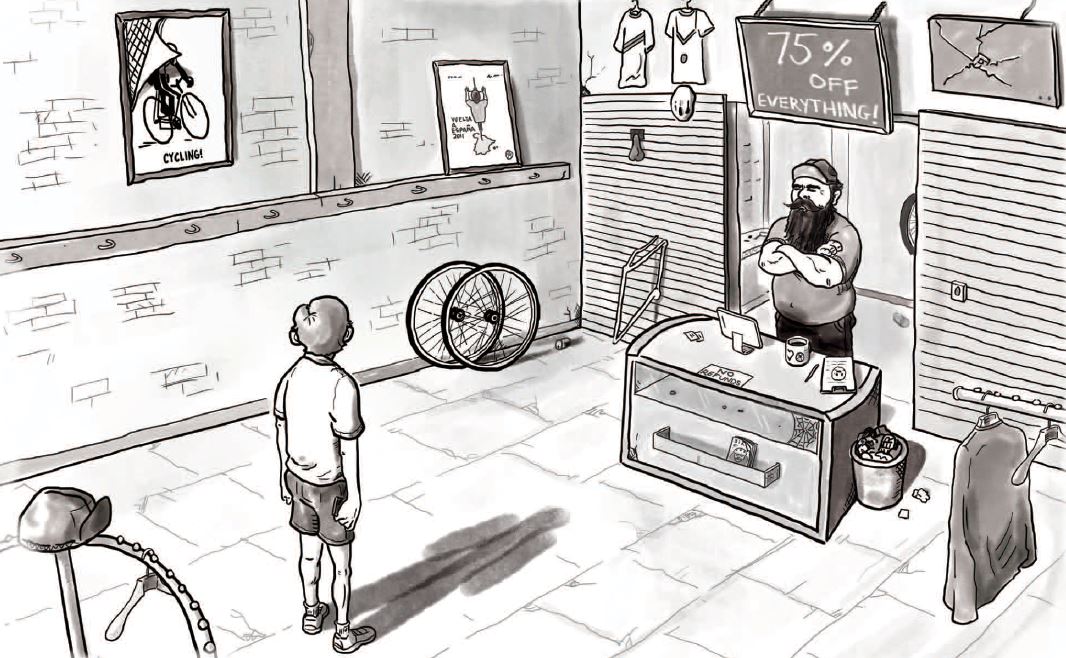Opinion: Let me be direct
Originally posted on March 25, 2016 at 7:11 am by Anna SchwinnIn an era when consumers can research and purchase almost anything online and have it shipped directly to their door, bicycle consumers must take the extra steps to visit their local bicycle retailer to get bikes from major brands. It isn’t as though consumer direct sales are impossible for something like a bicycle—similarly high-risk products are shipped to homes around the U.S. every day to be assembled and used by consumers. Instead, consumer direct sales of bicycles have been deliberately depressed by the American cycling industry, to the detriment of the consumer experience and to local bike shops who have been prevented from evolving and adapting to compete with online sales.

The current system has been great for large manufacturers, which is why they have fought so hard to maintain it. Shops are forced to take on the inventory risk through a massive investment in bicycles each season. If they don’t take on the prescribed inventory levels, they lose large brands or territory exclusivity. On top of this, manufacturers rely on bike shops to act as their front line—or only line—of customer service. When there is a slow sales year, the hurt is felt first and most aggressively by the shops that have already invested in flooring bikes for the season. When there is a problem with your expensive bike you worked hard to afford, it is a bike shop that has to face your ire directly.
Bike shops simultaneously serve as the comfortable buffer and the canary in the coal mine for large manufacturers. While it’s a raw deal for shops, that is what they have to work with. Margins from bike sales are often what keeps the doors open, and being the sole source for popular brands is a compelling draw bringing people in those doors.
One of the unfortunate consequences of the system is that because manufacturers rely on shops to take on this inventory, manufacturers tend to sell to shops rather than to end users. As a result, shops push the product they are invested in rather than what might be most appropriate for the consumer. If you’ve ever had a shop sales associate try to sell you on something that is the wrong size or completely inappropriate for your needs and had a poor consumer experience as a result, you’ve been a victim of this system. Your experience probably did not breed trust or encourage you to return to the shop for another purchase.
As the tide of online retail begins to rise, large American brands and retailers have every right to be concerned. Last summer, Canyon Bicycles announced it will begin selling bikes in North America. Like many European brands, Canyon only sells directly to consumers and can ship complete bikes directly to your door, almost fully assembled. Unlike the small American brands that sell exclusively direct, Canyon features a full range of bikes, from introductory models to high performance, from mountain bikes to triathlon bikes. The product is diverse, competitive, well-marketed and well-supported. Canyon, as well as similar European brands, challenges the American system by fully bypassing brick and mortar retail, and the introduction of this brand opens the door to this model for other brands.
Despite direct sales and the loss of exclusive product territories, online retail has not killed the bike shop in Europe. Because European shops are not the exclusive vehicle through which consumers can purchase their preferred brands and bikes, and because they do compete with online sales, these shops have adapted to be compelling and competitive beyond being an inventory house of product.
If you live in one of the saturated American cycling markets, you’ve witnessed first-hand how shops have successfully made themselves relevant when product is readily available through multiple avenues. When multiple shops exist within a small radius carrying similar product, retailers adapt and consumers have the luxury of being able to choose their retail experience.
Shops specialize. Service improves. Consumer experience improves overall because it has to. Bike shops shine as the community centers and sources of product knowledge and support that they can be. And consumers will want to spend for it.
Originally published in Issue #39